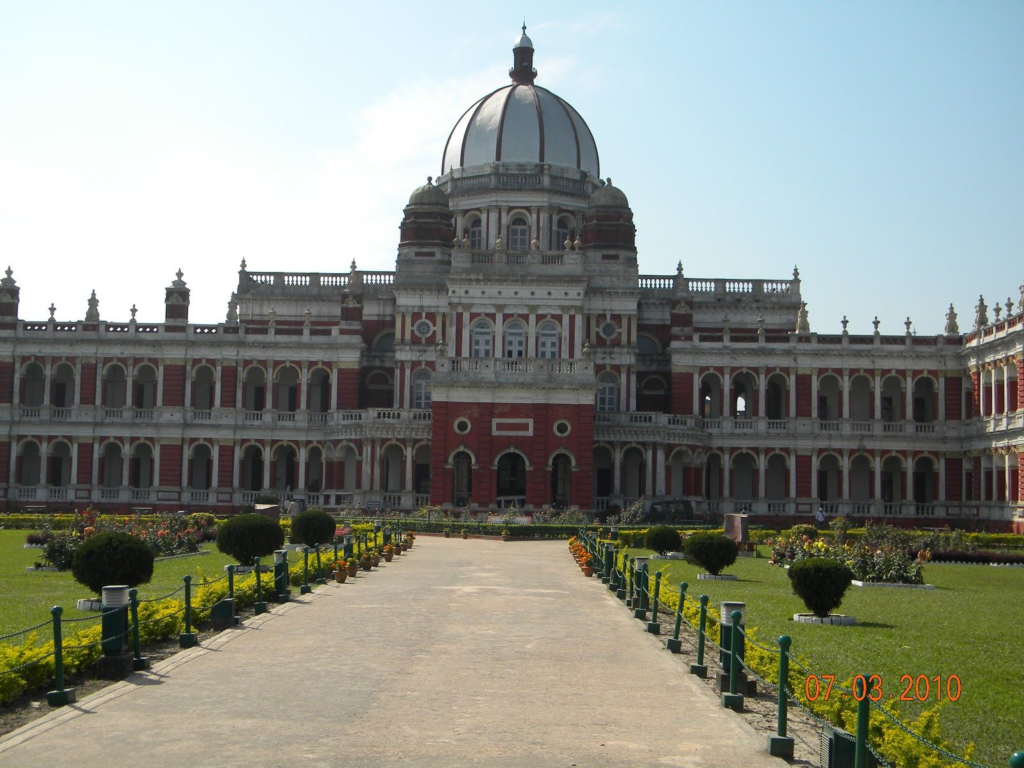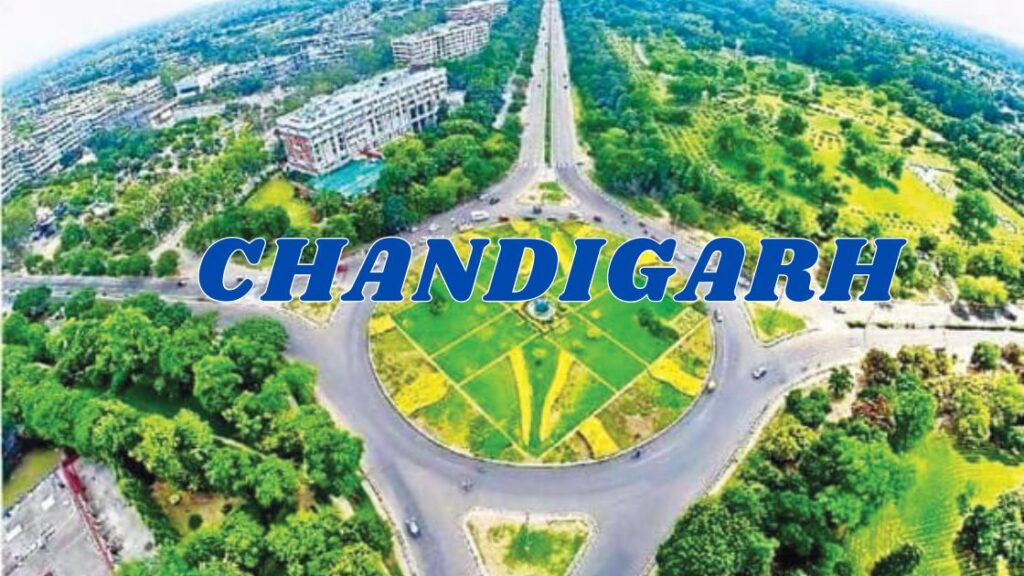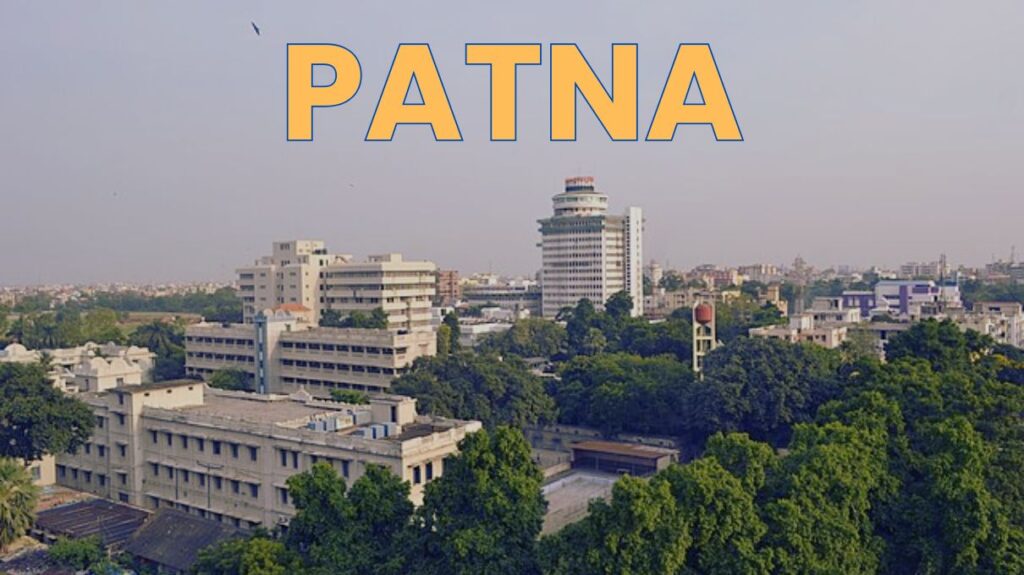All about Silchar
Silchar, nestled in the Cachar district of Assam, holds historical, administrative, and cultural prominence in northeastern India. As the second-largest city of Assam, Silchar stands out not only for its rich heritage but also as the administrative capital of the Barak Valley division. Established in 1832 by Captain Thomas Fisher, Silchar gained prominence when it became the new headquarters of the Cachar district.
Silchar: A Historical Gem and Gateway to Barak Valley
Historical Highlights:
- Founding of Silchar:
- Captain Thomas Fisher laid its foundations in the Janiganj area near the Barak River.
- It began as a port town facilitating trade and evolved as a pivotal hub over the years.
- Cultural Milestones:
- The world’s first polo club was founded here, and Silchar hosted the first-ever competitive polo match, underscoring its unique contributions to sports history.
- Silchar earned its nickname, “Island of Peace,” conferred by Indira Gandhi, a tribute to the region’s resilience and harmony amid challenges.
- Modern Achievements:
- In 1985, Silchar made global headlines when an Air India flight from Kolkata to Silchar marked the first instance of an all-women crew operating a commercial flight.
- Role in Tea Industry:
- During its early development, Silchar emerged as a tea town, with Cachar Club serving as a vital meeting point for tea planters.
Etymology and Origins:
The name Silchar reflects the region’s topography and historical roots. The term is believed to be derived from the Sylheti words “shil” (rock) and “char” (shore or island). According to historical accounts:
- Early settlements near the Barak River’s banks were rocky. Locals referred to the area as “Shiler Chor” (rocky shore), which later became Silchar.
- The British further adopted and popularized this name during their administration.
Silchar’s evolution is deeply connected to its status as an administrative nucleus. Being only 343 km from Guwahati, it bridges connections between the heart of Assam and its southern regions. The city’s economic, cultural, and strategic significance in Assam’s development continues to grow, further bolstered by its long-standing traditions and modern advancements.
History of Medieval Silchar and the Barak Valley
The history of Silchar and the Barak Valley region provides a captivating glimpse into the rich tapestry of political, cultural, and social dynamics before the city’s official founding during British colonial rule in 1832. Anchored by successive rulers—the Tippera, Koch, and Dimasa dynasties—the area saw dynamic shifts in governance and population, shaping its distinct identity over centuries. Below is a detailed account of its medieval history.

Rule of the Tippera Dynasty (13th–16th Century)
In the 13th century, the Tippera dynasty established their dominance over Cachar, making it a flourishing center of governance.
- Initial Capital: The Tippera kings ruled from Khalangsha, identified as Rajghat village in Sonai, 18 km from what is now Silchar. Khalangsha served as an administrative and cultural hub during their reign.
- Shift of Capital: Over time, the Tippera rulers shifted their focus to present-day Tripura, but the Barak Valley remained under their administrative domain.
- Cultural and Trade Importance: The Tippera dynasty encouraged trade, which thrived due to Cachar’s strategic location along the Barak River, connecting it to surrounding kingdoms.

Their reign in the Barak Valley continued until the mid-16th century, when their power diminished due to external threats, notably from the emerging Koch dynasty.

The Koch Dynasty’s Influence and Chilarai’s Victory
The Koch dynasty became a dominant force in northeastern India during the 16th century. Under the leadership of their military commander Bir Chilarai, the Barak Valley came under Koch control.
- The Battle of Longai (1562): Bir Chilarai, brother of Koch King Naranarayan, defeated the Tripura kingdom in Longai, marking the boundary between Tripura and Koch territories.
- Governance of Barak Valley: After the victory, Gosai Kamal, another brother of Naranarayan, was appointed governor of Barak Valley. His administrative headquarters was established in Khaspur, 20 km from Silchar.
Khaspur and the Fall of the Koch Dynasty
The Koch dynasty continued to rule the region from Khaspur even after their political influence waned in other parts of northeastern India.
- Succession of Koch Kings: A total of seven Koch rulers governed Cachar from Khaspur following Gosai Kamal. They included notable names like Udita Singha, Dhir Singha, Mahendra Singha, and Bhim Singha.
- The Transition of Power: The last Koch ruler, Bhim Singha, had no male heir. His only daughter, Kanchani, was married to Prince Laksmichandra of the Dimasa Kachari Kingdom, leading to a political alliance that merged the territories of the Koch and Dimasa kingdoms.
Dimasa Rule: A Unified Kingdom
The marriage of Kanchani to Prince Laksmichandra marked the end of the Koch dynasty and the start of Dimasa rule over Cachar, further solidifying Silchar’s connection to regional history.
- Foundation of Lakhipur: Following this union, Laksmichandra was made the governor of part of Cachar. He ruled from what is now known as Lakhipur, located 25 km from Silchar, named in his honor.
- Challenges to Dimasa Rule: The kingdom faced frequent invasions by neighboring powers, including the Mughals, Jaintias, Manipuris, Ahoms, and Burmese. Despite these attacks, the Dimasa rulers managed to maintain control of the Barak Valley for several decades.
Bengali Migration and Influence in the Barak Valley
Under Dimasa rule, the plains of the Barak Valley, especially Cachar, saw significant Bengali influence.
- Early Settlements: Bengalis had inhabited the region even before the Koch dynasty, but the Dimasa rulers actively encouraged further Bengali migration. This move bolstered the administrative and agricultural systems in the region.
- Hindu Conversion: During the late 18th century, the Dimasa kings formally adopted Hinduism with guidance from Bengali Brahmins.
- The Hiranyagarbha Ceremony: This important Hindu ritual was performed by Raja Krishna Chandra and Raja Govinda Chandra to solidify their Hindu identity.
- Economic Role of Bengalis: Bengalis served in various roles as cultivators, priests, scholars, and ministers in the Dimasa court, contributing to the kingdom’s economic stability and cultural diversity.
Bengali Language and Literature in Cachar
The influence of Bengali culture on the Dimasa rulers was not limited to governance; it extended deeply into literature and the arts.
- Adoption of Bengali: Bengali was declared the court language of the kingdom. The Dimasa kings were known patrons of Bengali literature.
- Translations of Sanskrit Texts: Under royal patronage, several Sanskrit works were translated into Bengali, showcasing the literary prominence of the region.
- Literary Works of Dimasa Kings: The Dimasa rulers themselves composed poetry and prose in Bengali, reflecting their deep appreciation of the language.
- Bengali Correspondence: Some of the only surviving written examples of Bengali literature from this period in Cachar are 27 letters written by Raja Krishna Chandra and Raja Govinda Chandra to the East India Company.
Colonial History
The history of Silchar under British colonial rule was shaped significantly by regional conflicts and administrative decisions. By 1823, the Burmese forces expanded into the Brahmaputra Valley and Manipur, creating tensions in Cachar. Recognizing the strategic importance of the region, the British signed the Treaty of Badarpur on March 6, 1824, designating Cachar as a British protectorate and officially recognizing Raja Gobinda Chandra as the rightful ruler of the territory. This treaty marked a shift in the region’s governance and strategic alignment.
The situation escalated in 1824 when the Burmese launched an offensive into Cachar. This triggered the First Anglo-Burmese War, which saw the British forces confronting Burmese advances near Dudpatil, close to modern-day Silchar. By 1825, the British successfully pushed the Burmese back into Manipur. This war concluded with the signing of the Treaty of Yandabo, in which the Kingdom of Ava relinquished its aggressive claims in the region, ensuring peace temporarily. However, the economic condition of **Raja Gobinda Chandra deteriorated under the pressure of an annual tribute of ₹10,000 to the British, a substantial financial burden.

When Gobinda Chandra was assassinated in 1830, the absence of a legal heir created a power vacuum. The British swiftly moved to annex Cachar, as stipulated in the Treaty of Badarpur, thereby transforming the region into a British-administered province. Leadership fell to Captain Thomas Fisher, who became the first administrator of the area.
Under British rule, Silchar emerged as an administrative hub, largely attributed to Captain Fisher’s vision and strategic planning. He identified the Janiganj-Sadarghat area as an ideal administrative center around 1832, laying the groundwork for Silchar’s development. Fisher’s plans were influenced by the strategic geographic location, easy access to Sylhet, the availability of land and labor, and the trade potential offered by the Barak River. These initial developments included the establishment of a Sadar station in Janiganj, along with the creation of facilities such as a jail, court, treasury buildings, and quarters for both British officials and Indian traders.
Further modernizations were initiated by John Edgars, who succeeded Fisher. John Edgars revolutionized urban planning by drafting a blueprint that transformed Silchar. He spearheaded the construction of roads, built essential infrastructure like the Deputy Commissioner’s office and circuit houses, and improved communication lines. This included the establishment of a steamer service connecting Silchar to Kolkata in 1850, and the laying of telegraph lines in 1861. These advancements cemented Silchar’s role as a commercial and administrative nucleus in the region.
The region also saw the evolution of healthcare and education. By 1835, Silchar had a rudimentary medical center that matured into a formal hospital by 1864, catering to both locals and the growing expatriate population. With its tea plantations flourishing by 1855, Silchar became a critical commercial hub, significantly boosting trade activities in British-administered Assam.
Silchar Under the British
The British administration brought numerous structural and institutional changes to Silchar. One of the significant milestones was the introduction of English education in 1863, marked by the establishment of the High Grammar School—a precursor to today’s Government Boys Higher Secondary School. These education reforms were instrumental in creating a skilled workforce and contributed to the socio-economic development of the town.
The creation of town administration began with the enactment of the Bengal Municipal Act of 1882, leading to the formation of a Town Committee, and later, the Silchar Municipality in 1891. These administrative developments were followed by key infrastructure advancements. The arrival of the Assam-Bengal Railway in 1899 connected Silchar to the Chittagong Port, drastically improving trade and transport efficiency.
Public amenities and intellectual hubs also started emerging during this time. In 1876, the Keating Library was established, offering literary and cultural resources. After India’s independence, this library was renamed the Arun Chanda Granthagar, continuing its legacy as a prominent center for education. Improved connectivity through steamships with Kolkata fostered growth in commerce and population.

The advent of modern polo in 1859 at Silchar is another historical hallmark. The world’s first Polo Club, known as the Silchar Kangjei Club, was founded by Captain Robert Stewart and Major Joseph Sherer, giving global recognition to the town. Over the decades, Silchar transformed into a bustling center with new neighborhoods like Central Road, Nazirpatty, and Tulapatty emerging due to increased trade, education, and transportation opportunities.
Post-Independence History
The post-independence period ushered in a wave of changes in Silchar, starting with the significant demographic and cultural shifts that followed the Partition of India in 1947. The partition resulted in a significant migration of Hindu refugees from East Pakistan, leading to a 10.5% increase in population in Silchar. The growing population necessitated new administrative adjustments, and by 1955, the Cachar Sessions Court was formally established in Silchar.
One of the most defining events in Silchar’s modern history occurred during the Barak Valley Language Movement of 1961. The government of Assam’s decision to enforce Assamese as the sole official language led to unrest in the Bengali-majority Barak Valley. On May 19, 1961, police opened fire on peaceful protestors at the Silchar Railway Station, resulting in the tragic death of 11 individuals, including Kanailal Niyogi, Chandicharan Sutradhar, and Hitesh Biswas. Their sacrifice became the cornerstone of the Bengali Language Movement, leading to the recognition of Bengali as an official language in the Barak Valley. May 19 is now solemnly observed every year as a day of commemoration.
Economically, Silchar witnessed substantial growth after independence. The influx of settlers and advancements in transportation systems enhanced the town’s status as a center for trade and education. With expanding connectivity and continued development of its tea industry, Silchar emerged as a prominent commercial, cultural, and educational hub in the region.
Language Movement in Barak Valley
Silchar played a central role in the historic Bengali Language Movement in the Barak Valley, which is remembered as a significant chapter in India’s linguistic and cultural struggles. The Silchar Railway Station, famously known today as the Bhasa Shahid Station, became a symbol of this movement.
The tension began when the Assam government, led by Chief Minister Bimala Prasad Chaliha, issued a circular enforcing Assamese as the mandatory state language, disregarding the linguistic diversity of the state. This sparked widespread discontent among the Bengali-speaking population of the Barak Valley, which felt marginalized by this unilateral decision.
On May 19, 1961, the situation escalated as unarmed protesters assembled at the Silchar Railway Station to peacefully voice their demand for the recognition of Bengali as an official language. In a tragic turn of events, the Assam police opened fire on the gathering, resulting in the death of eleven individuals. Their names, forever etched in history, include Kanailal Niyogi, Chandicharan Sutradhar, Hitesh Biswas, Satyendra Deb, Kumud Ranjan Das, Sunil Sarkar, Tarani Debnath, Sachindra Chandra Pal, Birendra Sutradhar, Sukamal Purakayastha, and Kamala Bhattacharya.
This massacre created a wave of anger and grief that reverberated throughout the region. The Barak Valley population came together in an unprecedented show of unity, forcing the Assam government to reconsider its stance. As a result of the massive public uprising and sacrifice of these language martyrs, the government withdrew the controversial circular. Subsequently, Bengali was granted official language status in the three districts of Barak Valley—a pivotal victory for the community.
The legal safeguard for the use of Bengali in Cachar district was codified in Section 5 of Assam Act XVIII, 1961, which ensures the use of Bengali for administrative and official purposes up to the district level. The act explicitly states, “Without prejudice to the provisions contained in Section 3, the Bengali language shall be used for administrative and other official purposes up to and including the district level.” This legislative milestone reflects the success of the movement and stands as a testament to the power of collective resistance.
Every year on May 19, people across the Barak Valley solemnly commemorate the sacrifices of the language martyrs. This day serves as a poignant reminder of their contribution and the enduring fight for linguistic rights and cultural identity in the region.
Geography and Climate of Silchar
Silchar, situated in the southernmost part of Assam, lies between the longitudes 92º24’ E and 93º15’ E and latitudes 24º22’ N and 25º8’ N. This beautiful city is perched at an elevation of 35 meters above mean sea level, characterized by an alluvial flat plain interspersed with swamps, streams, and small isolated hills locally referred to as tilla. Among its major rivers, the Barak River is the most prominent, while the Ghagra River also holds significance.
From a geological perspective, Silchar is situated in Zone V on the Seismic Zonation Map, indicating a high risk of earthquakes. The city has endured several destructive earthquakes, including one in January 1869, which measured 7.5 on the Richter scale, causing severe destruction. Other significant seismic activities occurred in 1947 (magnitude 7.7), 1957 (magnitude 7.0), and 1984 (magnitude 6.0). These geological vulnerabilities make disaster preparedness a critical concern for the region.
Climate Profile
Silchar experiences a borderline tropical monsoon climate (Köppen Am) that hovers on the edge of a humid subtropical classification (Cwa). Its “cool season” features warm, dry days with mild to cool mornings, offering brief relief from the general heat. However, the “wet season”, beginning as early as April with the arrival of the monsoon, dominates for seven months. During this period, the city experiences very hot and humid weather accompanied by heavy afternoon thunderstorms, which continue until mid-October. By November, Silchar sees a transition into its “cool” season, bringing relatively dry weather.
Silchar’s climate data reveals extreme temperature highs, reaching 40.0°C in May, and average daily highs generally stay around 30°C to 33°C during summer. During winters, temperatures can drop to 5.0°C, as recorded in January. Rainfall is abundant, particularly during the monsoon months, with an average annual rainfall of 3,039.7 mm. This wet season spans over 128 rainy days, keeping the region lush and vibrant.
In terms of air quality, Silchar was ranked the 30th best “National Clean Air City” in India in the category of cities with populations under three lakhs. This recognition reflects the city’s strides toward maintaining better air quality standards, an essential aspect of urban planning and environmental health.
Demographics of Silchar
According to the 2011 Census of India, the municipal area of Silchar recorded a population of 172,830 individuals. Notably, the sex ratio stood at 989 females per 1,000 males, surpassing the national average of 940 females per 1,000 males. The city’s literacy rate was 82.33%, exceeding the national average of 74.04%. Male literacy was noted at 84.15%, while female literacy reached 80.49%.
For the larger Silchar Urban Agglomeration, the population was 228,985, with 115,443 males and 113,542 females. The literacy rate in the Urban Agglomeration was an impressive 91.05%, with male and female literacy at 93.63% and 88.44%, respectively.
Religious Composition
Hinduism is the predominant religion in Silchar, comprising 86.31% of the population, or 154,381 followers. Islam is the second most practiced religion, with 12.17% (21,759 individuals), followed by Jainism (0.79%), Christianity (0.59%), Sikhism (0.04%), and Buddhism (0.02%). Around 0.08% of the population did not state their religion.
Religion in Silchar City (2011):
- Hinduism: 86.31%
- Islam: 12.17%
- Jainism: 0.79%
- Christianity: 0.59%
- Sikhism: 0.04%
- Buddhism: 0.02%
- Not Stated: 0.08%
Linguistic Profile
Bengali is the dominant language, spoken by 91.77% of the population, followed by Hindi at 5.36%. Other languages include Manipuri (2.05%) and Bishnupriya Manipuri (0.72%), with smaller percentages speaking other languages. Bengali and Meitei (Manipuri) are the official languages of Silchar.
Languages in Silchar City (2011):
- Bengali: 91.77%
- Hindi: 5.36%
- Manipuri: 2.05%
- Bishnupriya Manipuri: 0.72%
- Others: 0.10%
Political and Civic Administration
Political Representation
Silchar is a part of both the Silchar Lok Sabha constituency and the Silchar Vidhan Sabha constituency. Currently, Parimal Suklabaidya of the BJP represents the region in Parliament, while Dipayan Chakraborty, also from the BJP, serves as the MLA.
Civic Administration
The governance of the town is overseen by the Silchar Municipal Board. Established in 1865, it was initially formed under the Bengal District Town Improvement Act, 1864. Initially comprising eight European members, three Indian members, along with a chairperson and vice-chairperson, the municipality has evolved significantly over time.
- Key Milestones in Municipal History:
- 1868: Original municipality dissolved.
- 1882: Town Committee formed under the Bengal Municipal Act, 1876.
- 1891: Transition to municipality status upon the Deputy Commissioner’s recommendation.
- 1900: First municipal elections held with only 14.6% voter representation.
- 1913: Municipal Chairpersons began being elected directly.
- 1952: Post-independence elections expanded the wards to include Madhurban.
- 1971: Municipality area extended to 15.75 km², up from the earlier 10 km².
Over the decades, the Silchar Municipal Board has taken up key initiatives in road construction, sanitation, public health, and education infrastructure. Although elected representation existed until 1975, state-appointed executives began managing the board from 1984 onwards.
Industries
One of the prominent industrial landmarks in the region is Cachar Paper Mill (CPM), which serves as the cornerstone of industrial activity in south Assam and the neighboring states of Mizoram, Meghalaya, and Tripura. Despite facing challenges such as a lack of modern infrastructure, CPM has maintained an admirable track record of consistent production growth. In the fiscal year 2006–07, it recorded a remarkable production output of 103,155 metric tonnes, achieving 103% capacity utilization, surpassing the 100% capacity utilization of the previous year. This continued improvement demonstrates the mill’s resilient management and operational efficiency in a less-than-ideal setting.

In addition to CPM, Oil and Natural Gas Corporation (ONGC) operates from its base at Srikona, near Silchar, known as the Cachar Forward Base. ONGC’s operations extend into regions such as Tripura, Mizoram, and the Barak Valley, contributing to the local economy and energy sector.
Silchar also boasts a vibrant artisan community specializing in cane and bamboo crafts. This growing cluster of artisans creates a significant source of employment and cultural value, serving both local markets and export demands.
Transport
Silchar’s transport infrastructure has played a crucial role in connecting the city to the broader region. The Silchar Airport (IXS), located about 22 km from the city center in Kumbhirgram, was originally constructed during World War II. The airport, under the management of the Indian Air Force, facilitates 70 civilian flights per week, making it the second busiest airport in Assam and the fourth busiest in Northeast India after Guwahati, Agartala, and Imphal. The airport handles around 200,000 passengers annually. As part of the government’s initiative to build 51 low-cost airports across India, Silchar has been selected for an upgrade, which is expected to further enhance its connectivity.
In an intriguing historical note, Air India made its mark on Silchar’s aviation history in December 1985 when it operated the first-ever all-woman crew flight, which flew from Kolkata to Silchar. This historic flight was commanded by Captain Saudamini Deshmukh, aboard a Fokker F-27 Friendship aircraft.
For road transport, the Inter State Bus Terminal (ISBT) in Silchar acts as a key node for long-distance travel. It provides regular bus services connecting Silchar with Guwahati, Shillong, Agartala, Siliguri, and Imphal, among other cities in the region, offering residents and visitors easy access to vital destinations.
Educational Institutes
Silchar is an important educational hub in the region, with a focus on both general education and technical training. The city is home to Assam University, a central university established in 1994. It offers a wide range of academic programs across 17 schools and 35 postgraduate departments. Assam University has become a key institution in the region, serving a diverse student body and fostering academic growth in multiple fields. It is also affiliated with 56 colleges, providing students across southern Assam with accessible higher education.
Additionally, the city hosts several other renowned educational institutions. Gurucharan College, established in 1935, Cachar College, and Radhamadhab College, founded in 1971, contribute significantly to Silchar’s academic profile. Institutions such as the Silchar Medical College (established in 1968) and the National Institute of Technology (NIT), which was set up in 1969, ensure that the region is not only equipped with educational resources but also offers specialized programs in fields like medicine and technology.
Silchar also houses several noteworthy technical and medical educational institutes. The National Institute of Technology Silchar is renowned for its excellent engineering programs and global recognition. Additionally, Silchar Polytechnic, the National Institute for Automotive Inspection, Maintenance & Training (NIAIMT), and the Triguna Sen School of Technology at Assam University cater to the demand for skilled technical professionals.
Medical Facilities
In the healthcare domain, Silchar provides vital services to the southern region of Assam. The Silchar Medical College and Hospital, established in 1968, is the primary medical center serving the southern districts of Assam. Alongside this, the Government Dental College, Silchar and S. M. Dev Civil Hospital (founded in 1900) contribute to the local healthcare infrastructure.
An essential facility for those dealing with cancer is the Cachar Cancer Hospital & Research Centre, which operates under the governance of the Cachar Cancer Hospital Society, a non-profit organization. This institution provides comprehensive cancer treatment and support services to patients in the region.
Law Colleges
For those pursuing legal studies, Silchar houses A.K. Chanda Law College in Tarapur. This college plays a significant role in shaping legal professionals, imparting both theoretical and practical knowledge to students aspiring to enter the legal field.

Notable people
Silchar, a prominent city in the Barak Valley of Assam, is home to several notable individuals who have contributed to various fields such as politics, entertainment, sports, medicine, and business. These individuals have made significant impacts both locally and nationally, bringing recognition to the city and the region. Here’s an overview of some of the notable people associated with Silchar:
B. B. Bhattacharya
An eminent academician, B. B. Bhattacharya has significantly contributed to education and research in India. His work has been instrumental in shaping academic institutions and promoting higher education.
Kalika Prasad Bhattacharya
A renowned personality in the field of Assamese music, Kalika Prasad Bhattacharya is celebrated for his remarkable contribution to Assamese culture, particularly through his classical and folk music.
Arun Kumar Chanda
An academic and writer, Arun Kumar Chanda has been recognized for his contributions to literature and education in Assam, with a focus on social issues and community development.
Moinul Hoque Choudhury
A prominent political figure, Moinul Hoque Choudhury played a key role in the development of Silchar and its surrounding areas, contributing extensively to the political landscape of Assam.
Pritam Das
A name associated with public service and development, Pritam Das has made notable contributions in regional governance and development initiatives that have benefited the people of Silchar and its vicinity.
Santosh Mohan Dev
A respected political leader and former Union Minister, Santosh Mohan Dev made significant contributions to the development of the region. His leadership and dedication helped in bringing necessary infrastructural and educational reforms to Assam.
Sushmita Dev is a prominent political leader and former Member of Parliament (MP) representing Silchar. She is recognized for her work in public welfare and women’s empowerment, making her one of the leading political figures in Assam. Her contributions to both national politics and regional issues have made her a well-respected name in Silchar.
Ullaskar Dutta
A figure known for his involvement in local politics, Ullaskar Dutta worked to ensure the betterment of public policy and was actively involved in community outreach programs that improved infrastructure and governance in Silchar.
Rajdeep Goala
As a known public figure, Rajdeep Goala contributed in various capacities towards the cultural and social spheres of Silchar, enriching the region’s artistic and cultural landscape.
Nurul Huda
A scholar and researcher, Nurul Huda gained recognition for his contributions to the field of education and social upliftment in Assam. His academic pursuits have helped advance educational reform in the region.
Nihar Ranjan Laskar, a well-known figure in the education sector, played a significant role in the development of academic institutions in Silchar and contributed to nurturing young talent in the region.
Dilip Kumar Paul
Recognized for his entrepreneurial ventures, Dilip Kumar Paul has significantly contributed to the economic development of Silchar. His business acumen and ability to create employment have supported the local community’s growth.
Kabindra Purkayastha
An important figure in local governance, Kabindra Purkayastha was involved in numerous development projects aimed at improving the infrastructure and standard of living in Silchar and surrounding areas.
Ravi Kannan R
A surgeon and social entrepreneur, Ravi Kannan R has gained nationwide recognition for his contributions to healthcare. He is particularly well-known for his work in cancer treatment and his commitment to affordable healthcare for underserved communities in the region.
Rajdeep Roy
A distinguished political leader, Rajdeep Roy is currently serving as a Member of Parliament (MP) for Silchar. His tenure in national politics is marked by his active engagement in regional affairs and his efforts to promote sustainable development within Silchar.
Debojit Saha
A celebrated singer and performer, Debojit Saha rose to fame as a winner of the Indian singing competition Sa Re Ga Ma Pa. His musical career has made an enduring impact in the field of Assamese and Bengali music, bringing national attention to the talent of the region.
Debattama Saha is a popular television actress who has achieved fame for her role in Indian daily soaps. Her success in the entertainment industry has brought recognition not just to Silchar but also to the broader Assamese community.
Bir Radha Sherpa
A well-known dancer and performer, Bir Radha Sherpa has garnered recognition in the entertainment industry, with his exceptional dance skills gaining attention at both regional and national levels.
Rahul Singh
In sports, Rahul Singh has been a rising star, showing promise in various athletic disciplines and representing Silchar in regional and national tournaments, highlighting the city’s contribution to the development of sports in Assam.
These individuals, representing diverse sectors, have not only helped shape Silchar’s present but also contribute significantly to its future. Whether in politics, education, entertainment, or healthcare, their efforts have made lasting impacts on their respective fields and continue to inspire the younger generation from Silchar and beyond. Their legacy is a testament to the talent and determination present in this vibrant city.




